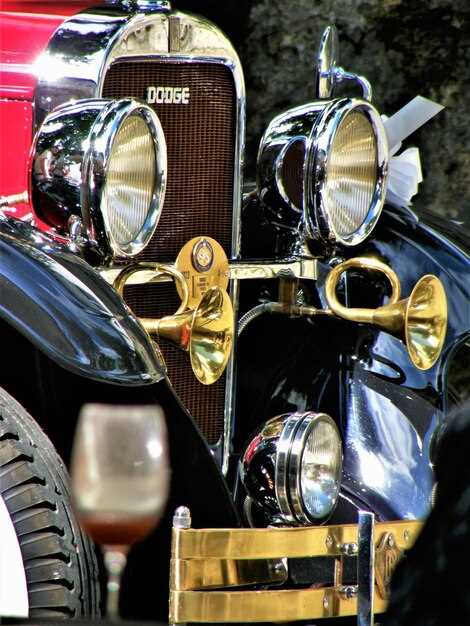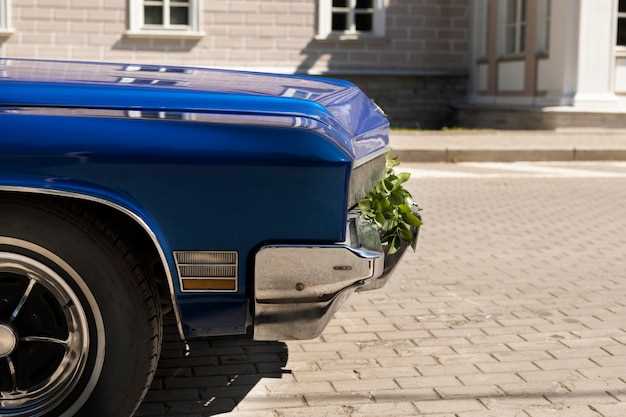
In recent years, the popularity of modified historic vehicles has surged, captivating enthusiasts and collectors alike. However, with this growing interest comes a myriad of legal considerations that must be addressed to ensure compliance with local laws and regulations. Understanding the pertinent codes governing vehicle modifications is essential for anyone looking to enjoy their classic ride on the street legally and responsibly.
The intersection of automotive customization and legal requirements is complex. Various jurisdictions impose specific rules regarding emissions, safety standards, and equipment specifications that can significantly affect how you modify your historic vehicle. Being informed about these codes will not only help you avoid potential fines but also ensure that your passion for restoration and customization does not lead to unintended consequences.
Additionally, the definition of a historic vehicle can vary from one location to another, influencing the modifications that can be made without breaching local laws. As a vehicle owner, it is your responsibility to navigate this landscape carefully, ensuring that your modified historic vehicle remains compliant while still reflecting your unique vision. Understanding these legal considerations will help you maintain the integrity of your vehicle on the street and preserve its historical value.
Understanding Street Legality for Modified Vehicles

As enthusiasts modify historic vehicles, understanding the legality of these alterations becomes crucial for safe and lawful street operation. Each jurisdiction has its own regulations governing what modifications are permissible, and non-compliance can result in hefty fines or inability to use the vehicle on public roads.
Firstly, it is essential to review local laws regarding vehicle modifications. Many states require that any changes made to the original specifications be inspected and approved. This can include alterations to emission systems, lighting, suspension, and even engine modifications. The goal is to ensure the modified vehicle adheres to safety standards and does not harm the environment.
In addition to safety inspections, owners should verify if their modifications affect the vehicle’s insurance policy. Some insurers may refuse coverage for extensively altered vehicles or may require special policies to ensure legality. It is advisable to consult with your insurance provider before making significant changes.
Another critical aspect of street legality concerns registration. Some modifications may require an updated title or registration to reflect the changes officially. Maintaining accurate documentation is vital for avoiding potential legal issues while driving.
Finally, participating in local car clubs or forums can provide valuable insights into common practices and local regulations. Engaging with other modified vehicle owners can help ensure compliance and foster a community that values both creativity and legality on the streets.
Navigating Vehicle Code Compliance for Historic Modifications

When it comes to modifying historic vehicles, understanding the legality of such changes is critical to ensure compliance with the vehicle code in your jurisdiction. Each state has its own regulations governing modifications, which can significantly impact the legality and usability of a modified historic vehicle.
First and foremost, it’s essential to determine whether your modifications are classified as ‘restorations’ or ‘alterations.’ Restorations typically involve returning the vehicle to its original state, while alterations can include updates that deviate significantly from the original design. The vehicle code often provides different guidelines for each category, affecting registration, safety standards, and emissions requirements.
Next, consult the local vehicle code to identify specific provisions that address historic vehicles. Some states have exemptions for older cars regarding certain aspects like emissions inspections or safety requirements, while others may demand compliance with modern standards regardless of the vehicle’s age. This variability underscores the importance of thorough research to ensure that modifications do not inadvertently violate regulations.
Additionally, consider how modifications impact the vehicle’s classification. Modifications that change the vehicle’s weight or use–such as converting a passenger car to a race car–could alter its legal designation, thereby invoking different compliance mechanisms under the vehicle code. Accurate classification is crucial, as it dictates the legal standards the vehicle must meet.
Moreover, it is advisable to keep extensive records of all modifications made, including receipts, photographs, and drafts of any changes to the vehicle’s configuration. This documentation not only serves as proof of compliance but can also be essential if you need to defend the legality of your modifications in the event of an inspection or legal inquiry.
Lastly, collaborating with professionals who specialize in classic cars and have thorough knowledge of vehicle codes can aid in navigating the complexities of legality surrounding historic modifications. Engaging with local automotive clubs, historians, or legal experts is another excellent way to gather insight and stay informed about any changes in the vehicle code.
Paperwork and Inspection Requirements for Modified Historic Vehicles
When it comes to modified historic vehicles, ensuring compliance with local regulations is essential for street legality. First and foremost, owners must gather all necessary paperwork that demonstrates the vehicle’s historic status, including documentation of its original specifications and any modifications made. This may involve providing proof of the vehicle’s age, such as a title or registration that shows its production year.
Additionally, modified vehicles often require an inspection to verify that alterations adhere to safety and emissions standards mandated by local authorities. Inspections typically involve checking critical components such as brakes, lighting, and exhaust systems. Failing to pass this inspection can result in fines, and the vehicle may be deemed unfit for street use.
Maintaining detailed records of any modifications is crucial. This includes receipts for parts purchased, documents showing professional installation, and any modifications that have been made to enhance safety or performance. These records not only support the legality of the vehicle but also assist in the inspection process, ensuring that the vehicle meets all regulatory standards.
It is equally important to confirm the classification of the vehicle with local motor vehicle departments. Some regions may have specific definitions for a modified historic vehicle, influencing its registration and the paperwork required. Owners should consult local laws to avoid penalties and ensure their modified historic vehicles are roadworthy and compliant with legal standards.




